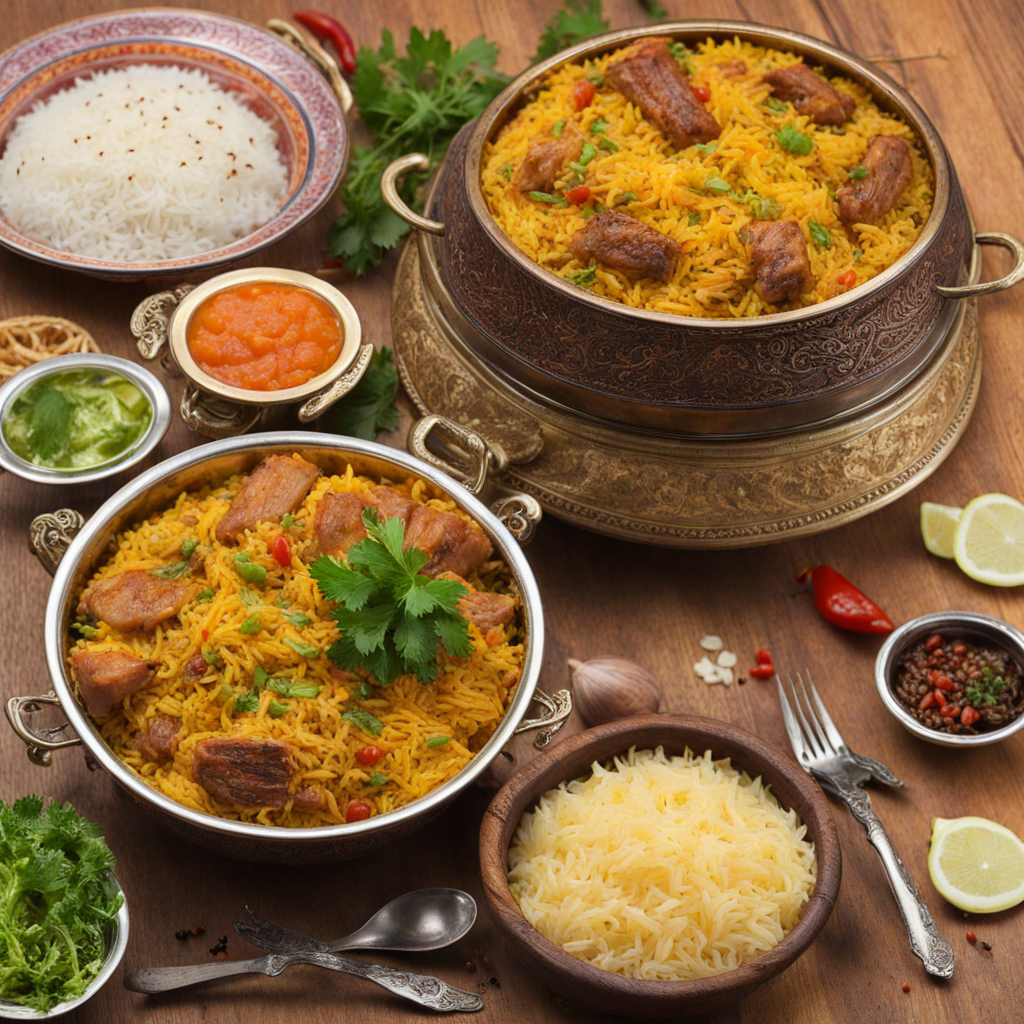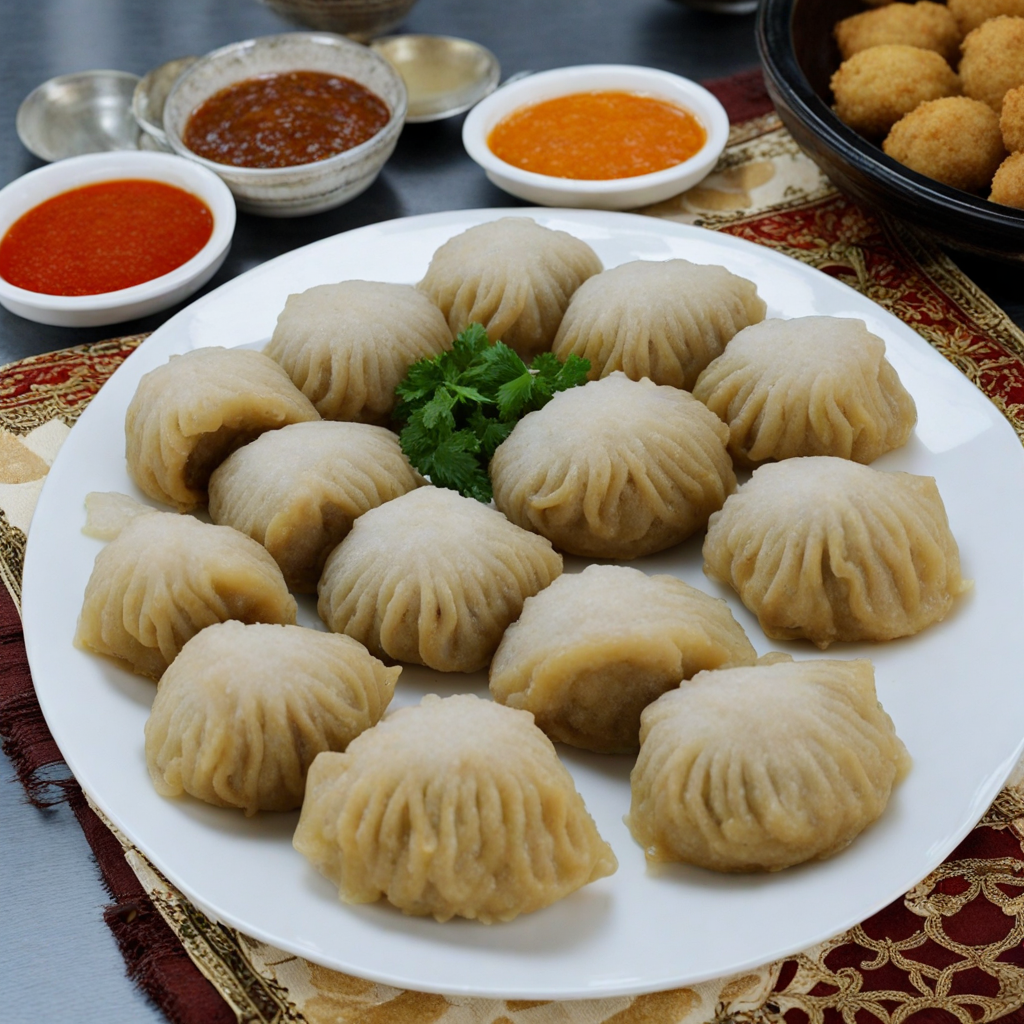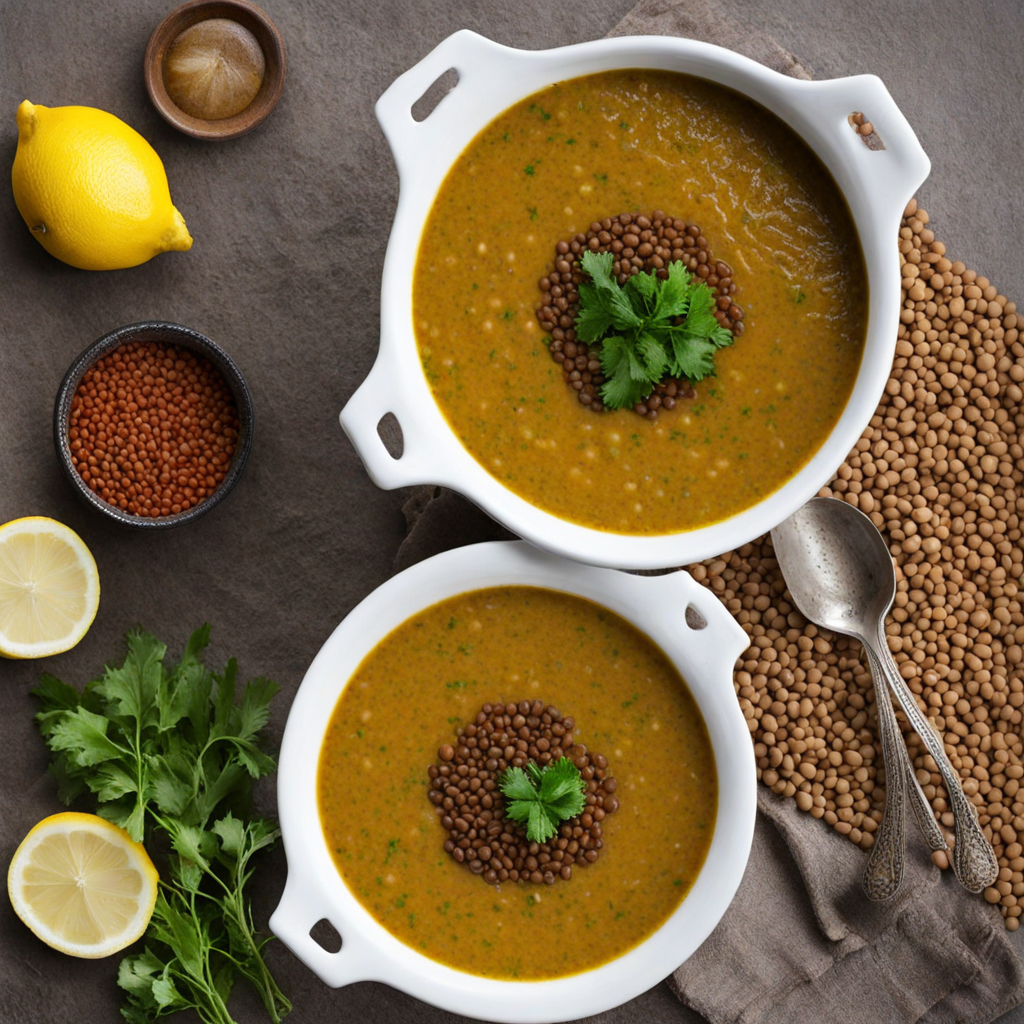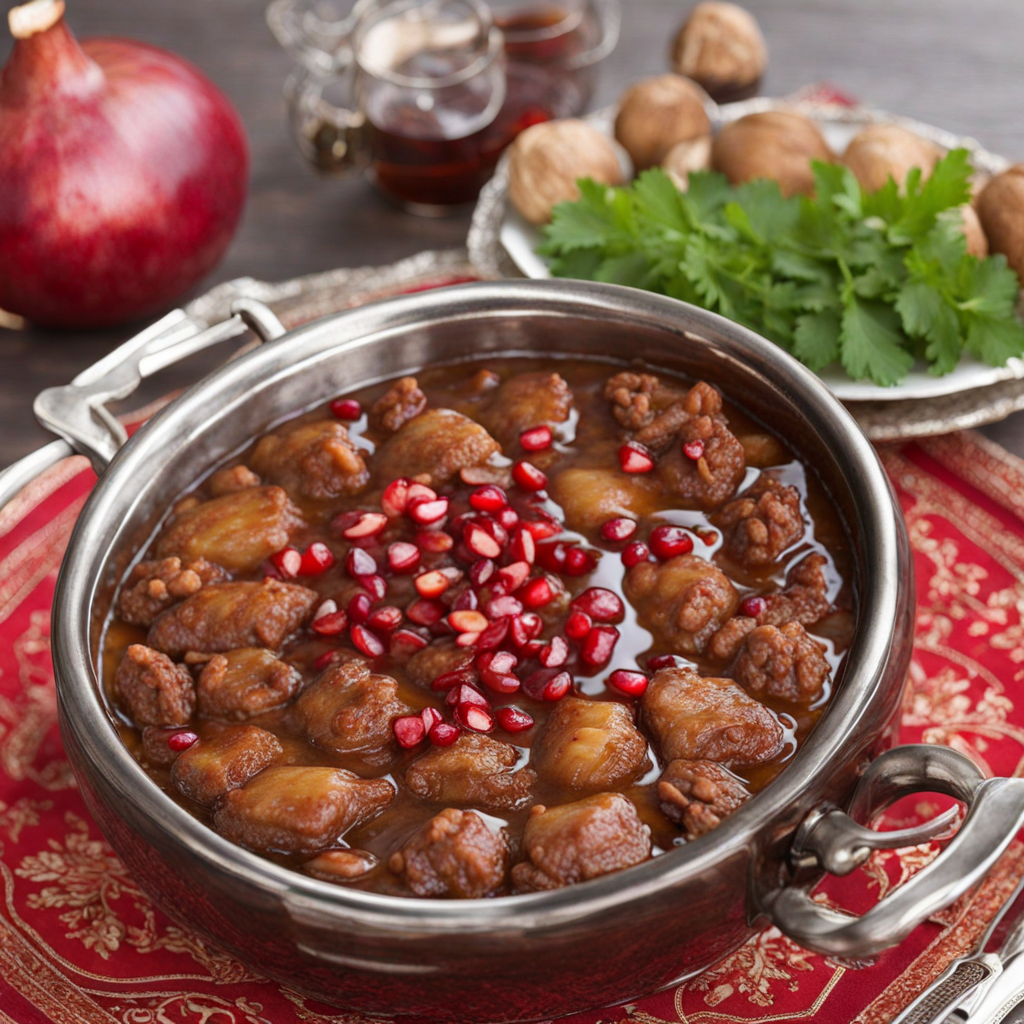Biryani
Biryani, particularly the Iraqi variation, is a richly layered and aromatic dish that showcases the culinary heritage of Iraq. This dish, although often associated with Indian cuisine, has a unique identity in Iraq, where it has been influenced by various cultures over centuries. The Iraqi biryani is characterized by its distinct use of spices and ingredients that reflect the region's agricultural bounty and historical trade routes. The history of biryani in Iraq can be traced back to the Persian and Mughal influences that permeated the region. It is believed that biryani was introduced to Iraq through the Persian Empire, evolving over time into a dish that incorporates local flavors and ingredients. This continuous adaptation has allowed Iraqi biryani to take on a distinctive character, setting it apart from its South Asian counterparts. Traditionally, biryani was a dish reserved for special occasions, celebrations, and family gatherings, symbolizing hospitality and abundance. The flavor profile of Iraqi biryani is a harmonious blend of spices, meat, and fragrant rice. The dish is known for its balanced seasoning, which often includes a mixture of turmeric, cardamom, cinnamon, and allspice, providing a warm and inviting aroma. The use of saffron, sometimes included in the cooking process, adds a subtle earthiness and a beautiful golden hue to the rice. The flavors develop as the ingredients cook together, creating a rich and complex dish that tantalizes the palate. Preparation of Iraqi biryani is a labor of love, typically
How It Became This Dish
The dish known as برياني (Biryani) has a rich and intricate history that traces back to the Indian subcontinent, yet it has found a unique place in Iraqi cuisine, where it is celebrated as a sumptuous and festive dish. The origins of Biryani can be linked to the Persian word 'Birian,' which translates to 'fried before cooking.' This points to the method of preparation wherein marinated meat is first sautéed before being layered with partially cooked rice. While its roots are in Persia, the dish was popularized in India during the Mughal era, which also influenced various regional adaptations, including the one found in Iraq. The journey of Biryani to Iraq can be attributed to the historical interactions between the peoples of the Middle East and the Indian subcontinent, especially during the time of the Mughal Empire and the subsequent trade routes that connected these regions. As the dish traveled westward, it absorbed local ingredients, spices, and cooking techniques. In Iraq, Biryani became a symbol of culinary sophistication, often reserved for special occasions such as weddings, religious celebrations, and communal feasts. The Iraqi version of Biryani is characterized by a blend of spices that reflect the region’s diverse culinary heritage, incorporating ingredients such as cardamom, cloves, and saffron, which add distinct flavors and aromas to the dish. Cultural significance plays a monumental role in the appreciation of Biryani in Iraq. It is not merely a meal; it embodies hospitality and community spirit. Traditionally, it is served during communal gatherings, where large platters are presented to family and friends. The act of sharing Biryani is steeped in the values of generosity and togetherness that are central to Iraqi culture. Moreover, the preparation of Biryani often involves the participation of multiple family members, transforming the cooking process into a communal activity that strengthens familial bonds. Over the years, Biryani in Iraq has undergone significant transformations. The dish has adapted to local tastes and available ingredients, resulting in various regional variations across the country. For instance, in Baghdad, Biryani is often prepared with lamb or chicken and flavored with a rich array of spices. In contrast, in the southern regions of Iraq, seafood might be incorporated, showcasing the influence of the country’s proximity to the Persian Gulf. The inclusion of nuts, such as almonds and pistachios, and the garnish of fried onions further elevate the dish, making it not just a meal but a feast for the senses. The cooking technique also distinguishes Iraqi Biryani from its Indian counterparts. While traditional Indian Biryani often employs the 'Dum' method—slow-cooking the dish in a sealed pot—many Iraqi cooks prefer a more straightforward approach. The rice and meat are often cooked separately, then layered together before being finished in the oven. This method allows for more control over the cooking process and ensures that each component retains its individual flavor and texture. In contemporary Iraq, the popularity of Biryani has only grown, with many restaurants and eateries offering their own interpretations of the dish. This evolution reflects the global nature of cuisine today, where traditional recipes are infused with modern techniques and ingredients. Additionally, the dish has gained recognition beyond Iraq's borders, where diaspora communities introduce their beloved Biryani to new audiences, thereby expanding its cultural footprint. The role of Biryani in Iraqi society extends beyond mere consumption; it is a culinary representation of identity. For many Iraqis, preparing and serving Biryani is a way to connect with their heritage, particularly in times of cultural upheaval or change. When families gather to make Biryani, they are not only creating a meal but also preserving traditions and stories passed down through generations. This aspect of cultural continuity is crucial, especially in a country where history is marked by conflict and transformation. Furthermore, Biryani has also become a source of pride for many Iraqis, who take great care in perfecting their recipes and techniques. Competitions and cooking events centered around Biryani highlight the dish's significance, encouraging younger generations to learn the art of preparing this cherished meal. These events foster a sense of community and allow for the sharing of knowledge and skills, reinforcing the dish's place within the cultural fabric of Iraq. In addition to its traditional roots, the global culinary landscape has influenced the way Biryani is perceived and prepared in Iraq. The advent of social media and cooking shows has allowed for greater exposure to diverse cooking styles and fusion cuisines. As a result, some modern Iraqi chefs experiment with Biryani recipes, incorporating unexpected ingredients or contemporary plating styles. This innovative spirit is a testament to the dish's adaptability and its capacity to evolve while remaining true to its essence. Despite these modern adaptations, the heart of Iraqi Biryani remains deeply tied to its cultural and historical roots. Whether enjoyed at a celebratory feast or a casual family meal, Biryani continues to represent not just nourishment but also a connection to the past, a celebration of community, and a reflection of the rich tapestry that is Iraqi culinary heritage. As Biryani evolves, it remains a beloved dish that embodies the essence of hospitality and the joy of sharing food with others. It serves as a delicious reminder of the intertwining histories of the peoples of the Middle East and South Asia, celebrating their mutual influences and shared culinary legacies. The ongoing popularity of Biryani in Iraq will undoubtedly continue to inspire future generations, ensuring that this flavorful dish will remain a staple of Iraqi culture for years to come.
You may like
Discover local flavors from Iraq







